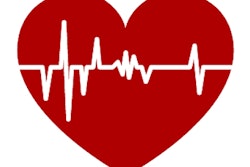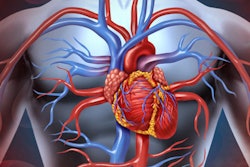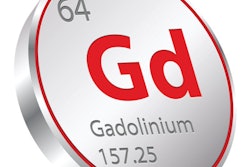
Using MRI to measure left ventricular (LV) hypertrophy enables clinicians to better predict death and heart failure related to coronary artery disease than coronary artery calcium scores from CT, according to a study published August 27 in Radiology.
After following participants in the U.S.-based prospective, longitudinal Multi-Ethnic Study of Atherosclerosis (MESA) for some 15 years, the researchers also found that patients with left ventricular hypertrophy, also known as left ventricular mass, are almost five times as likely to have a severe adverse event than participants without the condition.
"Coronary artery calcium score is known to have a high predictive value for coronary heart disease events, effectively acting as an integrated index of multiple cardiovascular risk factors related to atherosclerosis," wrote the study authors, led by Dr. Nadine Kawel-Boehm, a senior staff radiologist at Hospital Graubünden in Chur, Switzerland. "Our study results showed that while LV hypertrophy and coronary artery calcium score were both independent predictors of hard coronary heart disease events, LV hypertrophy was an even stronger predictor of coronary artery disease-related death, other cardiovascular death, and heart failure."
Left ventricular hypertrophy is known to increase the risk of future cardiovascular events, such as heart failure, coronary heart disease, stroke, and death. The good news is that treatment for the condition is successful in reducing the chances of a severe outcome in approximately 60% of cases. However, limited research exists on whether LV hypertrophy evaluation via MRI can foretell future adverse events.
To delve deeper into this question, the researchers of the current study enrolled 4,988 MESA subjects (mean age at baseline, 62 years) who had undergone baseline 1.5-tesla MRI scans (Avanto and Espree, Siemens Healthineers; Signa HD, GE Healthcare) to determine left ventricular mass and volumes. In addition, they obtained coronary artery calcium scores via CT scans.
Over the course of the 15-year follow-up, 290 participants (6%) experienced significant coronary events, which included 207 myocardial infarctions (71%) and 95 coronary heart disease deaths, 83 of which (87%) occurred after the heart attack. There also were 57 other cardiovascular-related deaths. In addition, a total of 215 participants (4%) developed heart failure.
Patients with left ventricular hypertrophy were 4.3 times more likely to experience a coronary artery disease-related death and had 7.5 times the risk of another cardiovascular-related death, compared with participants without the condition, and they were also 2.8 times more likely to have a myocardial infarction. All three comparisons were statistically significant (p < 0.001).
The researchers also applied z scores to compare the difference between left ventricular hypertrophy and coronary artery calcium scores in predicting future outcomes. Z scores quantify a particular variable's contribution to a result; the greater z score is above 0, which equals the mean, the greater the variable's influence. In this case, the presence of hypertrophy was significantly better in gauging the risk of adverse coronary heart disease outcomes than coronary artery calcium scores.
| Z score results in predicting the risk of a future adverse event | |||
| Coronary heart disease death | Cardiovascular death | Heart failure | |
| LV hypertrophy | 5.4 | 6.8 | 9.7 |
| Coronary artery calcium scores | 3.4 | 2.4 | 3.2 |
The findings are particularly important for patients with left ventricular hypertrophy because the condition can be treated and reversed.
"In contrast to the widely used coronary artery calcium score, which is not known to regress with medical therapy, elevated LV mass is potentially reversible with treatment, and individuals with the most elevated risk are in the upper 5% of the population, allowing physicians to target therapy to this group," Kawel-Boehm and colleagues noted. "Our results provide further evidence and motivation for aggressive treatment of individuals with LV hypertrophy."


.fFmgij6Hin.png?auto=compress%2Cformat&fit=crop&h=100&q=70&w=100)





.fFmgij6Hin.png?auto=compress%2Cformat&fit=crop&h=167&q=70&w=250)











